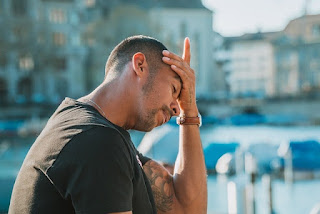Back Pain in Children and Adolescents: What Parents Need to Know
Nothing reminds you of your age like an achy back. Suddenly, even relaxing activities, like sleeping or hanging out on the couch, can feel uncomfortable. Everything has been tried, including additional pillows, a new mattress, and different sleeping positions. So what should you do if your back discomfort persists despite these adjustments?
First, you need to understand that you are not alone. Back pain is one of the most common reasons people see a doctor.
Physical therapy to treat adolescent back pain
Before you consider therapy, think about what may be causing the back pain. Sometimes the root cause is minor, such as sitting with a bad posture or a sudden movement that may have caused a sprain. Typically, when this happens, the pain will subside on its own after a couple of days through conservative treatment such as heat therapy, rest, and over-the-counter medication.
However, if the pain is chronic or gets worse, it could signify a more serious health condition, such as arthritis, kidney infections, a herniated disc, bowel issues, or even cancer.
If your symptoms don’t improve within a few days, seek medical help. If your doctor recommends therapy, wear comfortable clothes for that first appointment since you’ll have to move around a lot and because the therapist will want to measure your posture, range of motion, and the varying strength of your different muscles before devising a therapy plan.
What to expect from physical therapy
A trained therapist will assess your back ailment and suggest specific exercises to help you heal. Some of these include:
Stretching
Strength Training
Low-impact aerobic activity
Manual Therapy
Electrical Stimulation
Benefits of physical therapy for adolescent back pain physical
Personalized Care: One of the benefits of seeking help from a therapist is that they will not perform a one-size-fits-all approach. They will consider your body type, age, lifestyle (whether you’re typically a sedentary person or an athlete), existing health conditions, and how you respond to different kinds of movement.
Decreased pain: The therapist will look at your gait (the way you move when you walk or run) and how you get up from a sitting or lying down position and suggest exercises that will diminish the pain directly caused by your movements. The therapist might also use electrical stimulation to restore function.
Restored mobility: Physical therapists not only treat pain, but they also look for the root cause of discomfort. For example, if the lower back is stiff, the therapist will focus on how to ease the stiffness. If the back muscles are weak, the therapist will recommend strengthening exercises that will aid in recovering your entire range of motion.
Lessens the possibility of additional harm: Suppose you must do repetitive movements due to your job duties or athletic activity. Your therapist will consider such movements and suggest recovery stretches to avoid future back injuries.
Lowers the possibility of falls: If you have bad posture or a degenerative illness, that makes falling more likely.
The therapist will create an improvement plan for balance and coordination by combining physical therapy with biomagnetism.
This therapy is one of the most proactive approaches to cure back pain conservatively, and surgery should only be used as a last option.
List potential causes of discomfort, such as activities you enjoy, stressful life events, employment, sports, recent accidents or injuries, and family history, to be as prepared as possible. You and your therapist will choose the ideal program for you.
Reference:
https://www.spine-health.com/treatment/physical-therapy/physical-therapy-low-back-pain-relief
https://www.ncbi.nlm.nih.gov/pmc/articles/PMC6251828/



Comments
Post a Comment